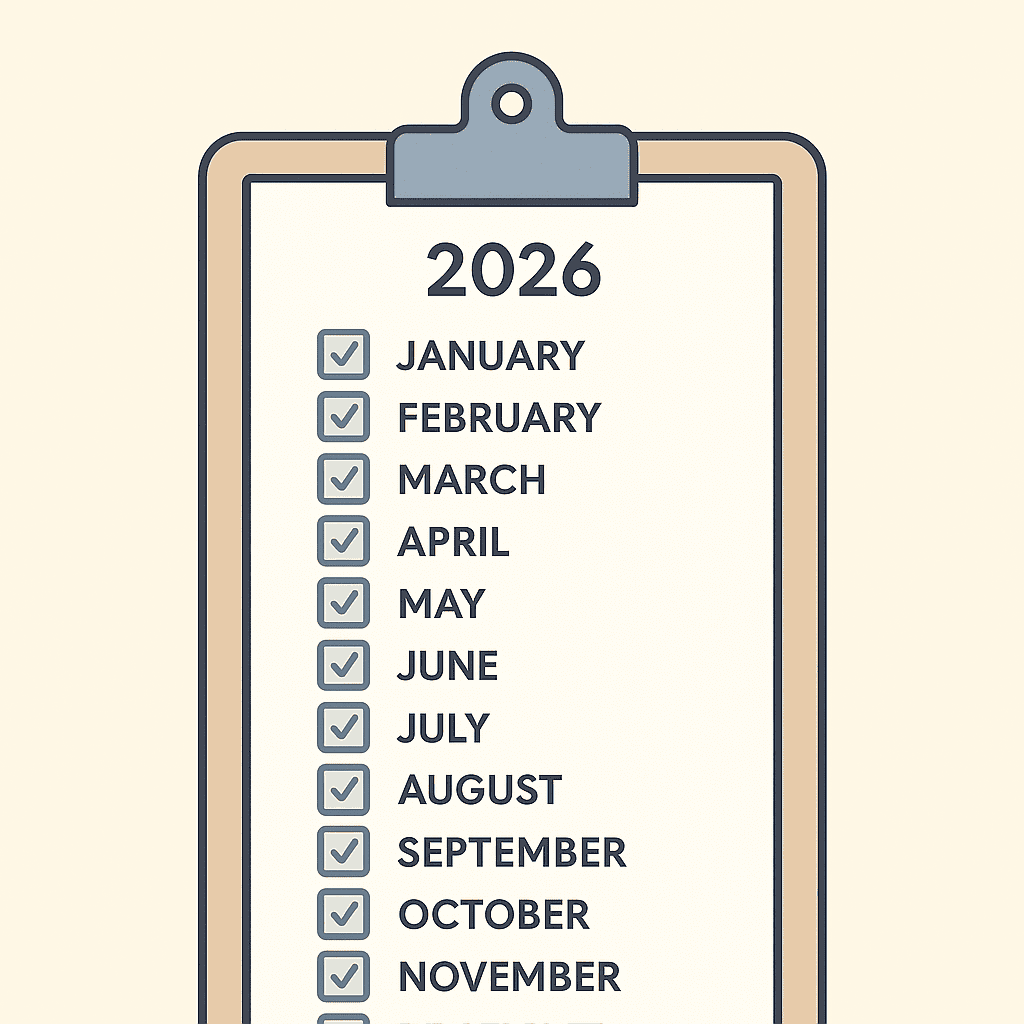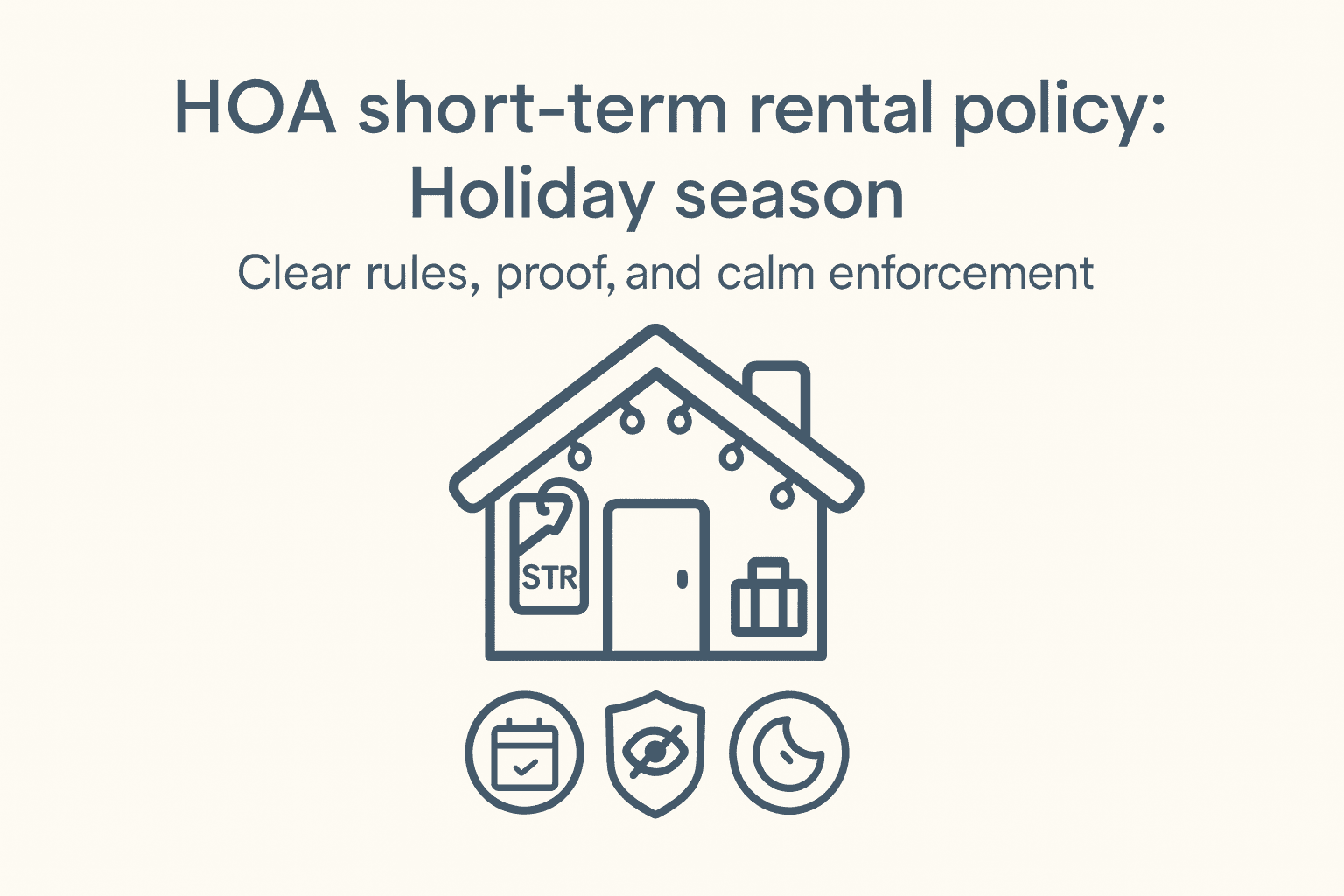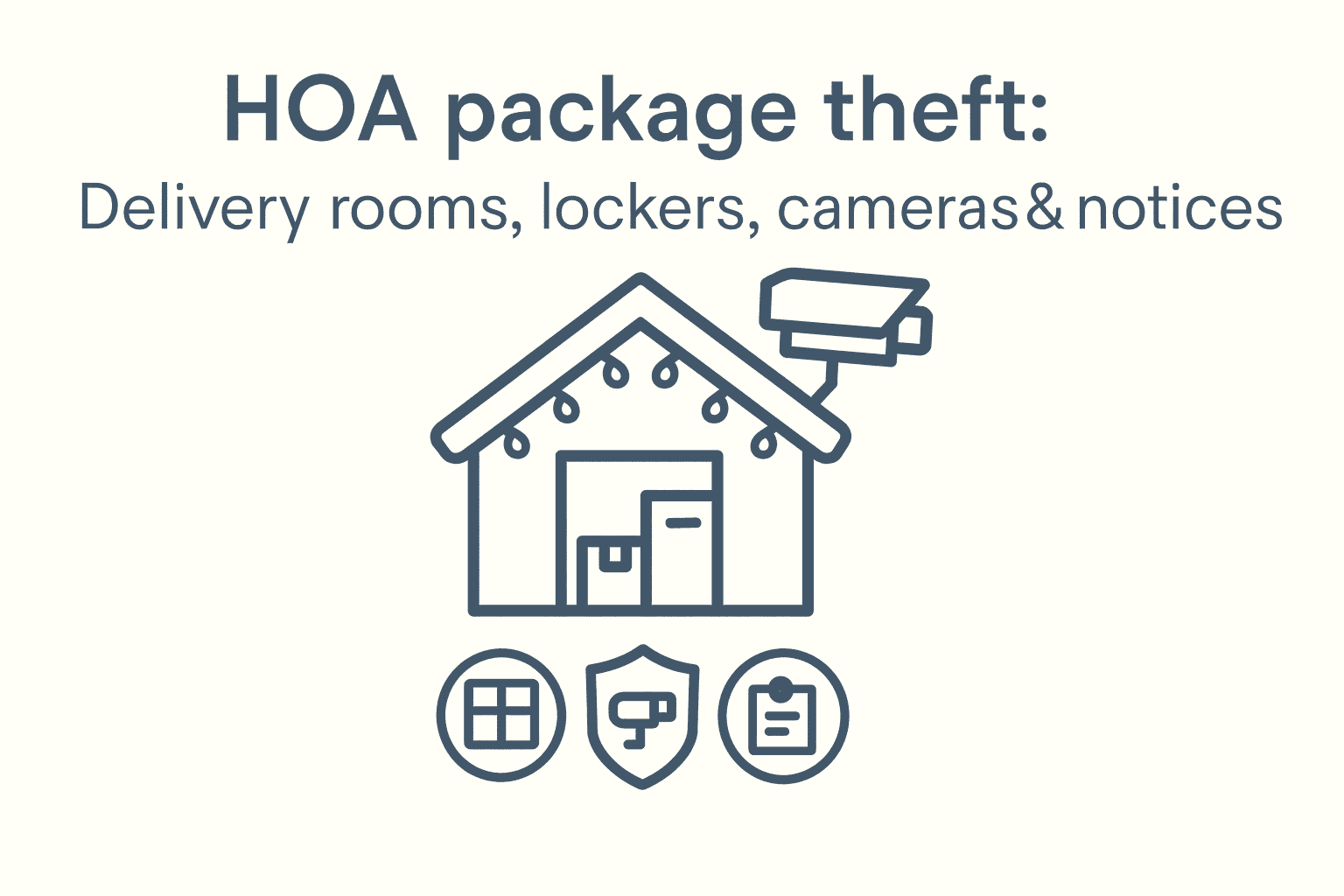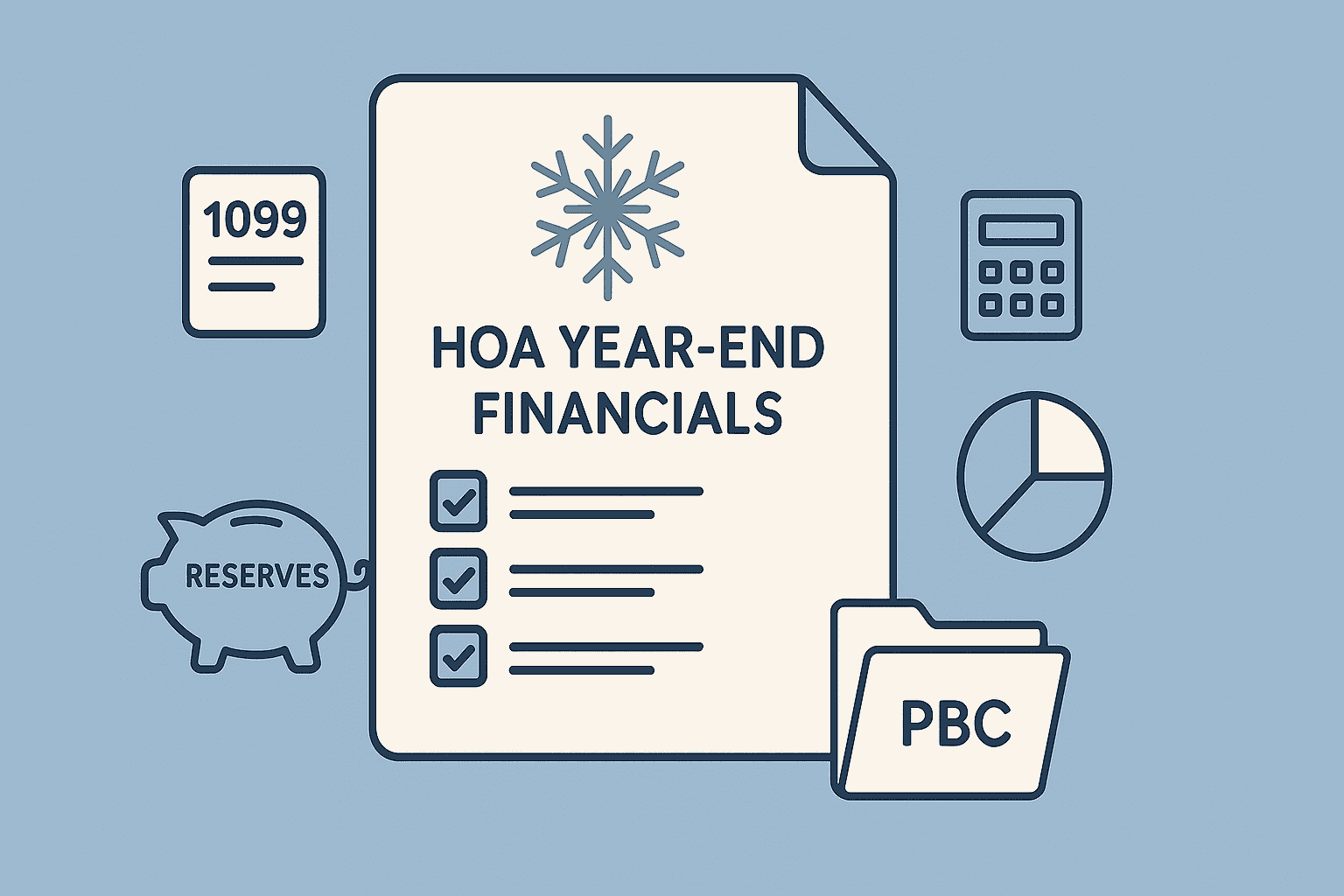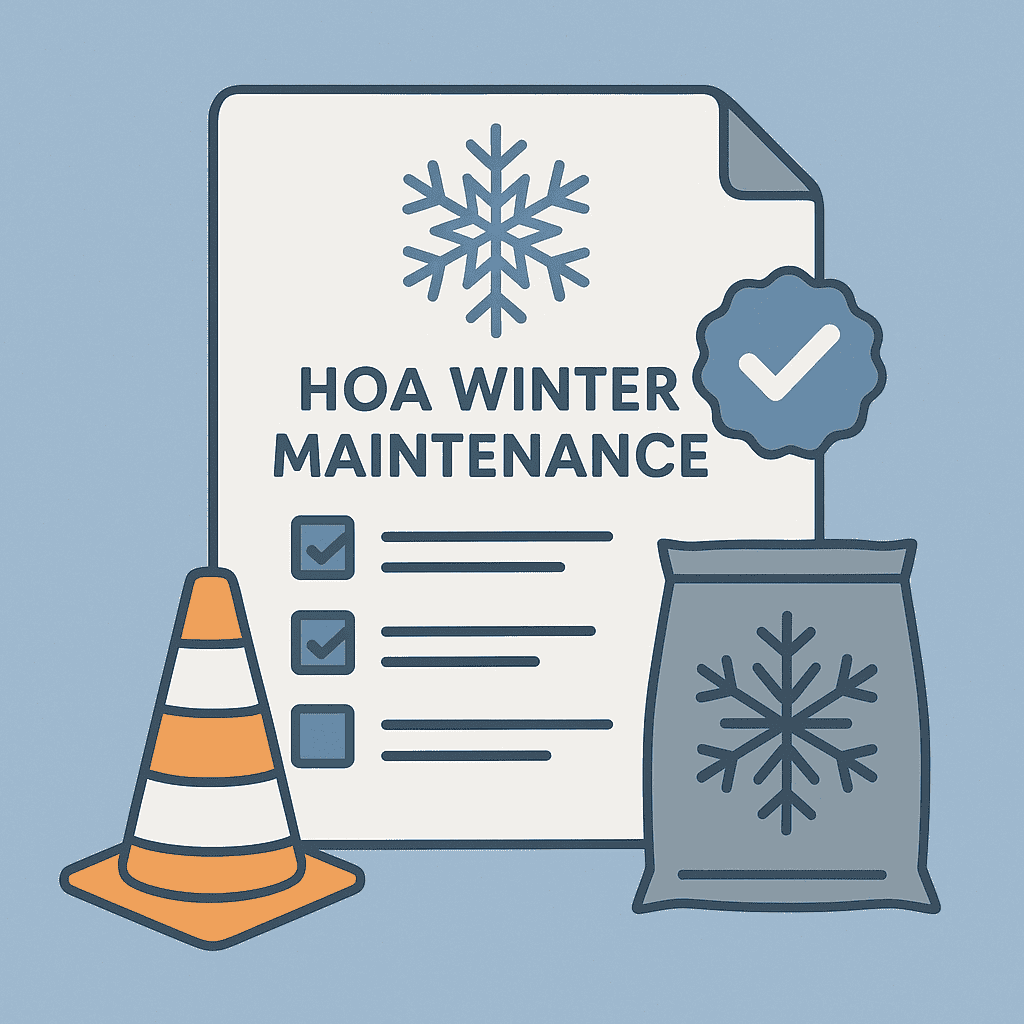HOA maintenance responsibility chart: What it is and how to use it
A HOA maintenance responsibility chart is a simple tool that shows exactly who is responsible for repairs and upkeep. Whether it’s the HOA or the homeowner. It cuts down on confusion, speeds up repairs, and helps avoid disputes. In this guide, we explain what it is, why it matters, and how your HOA can create one that works.
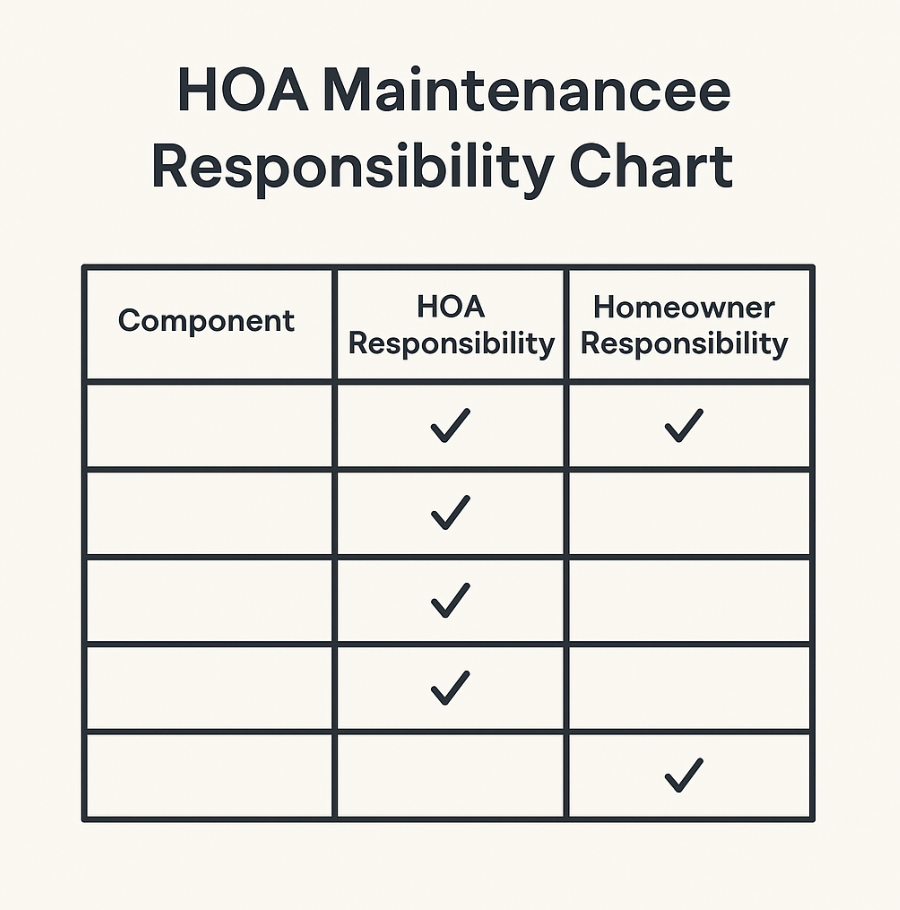
If you live in a homeowners association (HOA), you’ve probably asked yourself at some point: “Who’s supposed to fix this?”
That’s where a HOA maintenance responsibility chart comes in. It’s a simple, visual guide that shows exactly who is responsible for repairs, replacements, and upkeep, and whether it’s the HOA or the homeowner. No guessing. No long legal documents. Just a simple visualization.
In this post, we’ll explain what a maintenance responsibility chart is, why it matters, and how your HOA can use one to avoid confusion and disputes.
What is a HOA maintenance responsibility chart?
A HOA maintenance responsibility chart is a straightforward table or diagram that lists all the parts of your community (inside and outside) and says who takes care of them.
It might include things like:
- Walls, ceilings, and floors
- Windows and doors
- Driveways and balconies
- Roofs and gutters
- Landscaping and shared pathways
Each item in the chart has a clear label: HOA responsibility or homeowner responsibility.
This makes it quick to check who should arrange the work and pay for it.
Why it’s so useful
Without a chart, questions about repairs can turn into drawn-out conversations, or worse; arguments. A homeowner might expect the HOA to fix something, while the HOA assumes it’s up to the homeowner.
See the dilemma?
A chart avoids all of that by making the rules easy to find and understand. The benefits are big:
- Clarity: Everyone knows what’s expected of them.
- Fewer disputes: Less back-and-forth about who should pay.
- Faster repairs: Work can start without delays over responsibility.
- Better budgeting: The HOA and homeowners can plan for costs in advance.
It’s not just for big repairs, either. Even small issues, like repainting a fence or replacing a window screen, are easier to handle when responsibilities are clear.
How to create one for your HOA
Creating a HOA maintenance responsibility chart takes a bit of time, but it’s worth it. Here’s a simple approach:
- Check your governing documents: Start with your CC&Rs (Covenants, Conditions & Restrictions), bylaws, and any policies your HOA already has. These usually say who is responsible for different parts of the property.
- List every component: Go beyond the basics. Break things down into smaller parts, like the difference between a window frame, the glass, and the exterior trim. The more specific you are, the fewer disputes you’ll have.
- Mark who’s responsible: For each item, clearly say whether it’s the HOA or the homeowner’s job.
- Get it reviewed: Have your HOA’s lawyer look it over to make sure it matches your governing documents and local laws.
- Publish and share it: Put it on your HOA website, include it in welcome packets for new homeowners, and send it out in newsletters. The more people see it, the better it works.
Example HOA maintenance responsibility chart
Here’s a simple example to show how such a chart might look:

Tips for keeping it effective
A maintenance responsibility chart isn’t something you create once and forget. Communities change. Laws change. So should your chart.
- Review it every year: Update anything that’s unclear or missing.
- Use plain language: Avoid legal jargon so everyone can understand it.
- Make it easy to find: Keep it online and in printed form.
- Refer to it often: Bring it up when handling repair requests so it becomes a natural part of your process.
Common examples in a chart
While every HOA is different, many charts include these categories:
- Exterior building parts: Roofs, siding, gutters
- Interior building parts: Walls, ceilings, floors
- Windows and doors: Frames, locks, glass panes
- Outdoor areas: Lawns, gardens, sidewalks, parking lots
- Shared spaces: Pools, clubhouses, gyms
- Systems: Plumbing, heating, air conditioning
How it helps homeowners
For homeowners, the chart is more than just a list. It’s transparency and clarity. They can plan ahead for repairs they know they’re responsible for. They won’t waste time filing requests the HOA can’t fulfill. And they’ll better understand what their HOA fees are paying for.
How it helps the HOA board
For the board, it’s a tool that makes life easier. Decisions are faster, communication is clearer, and resources are used more effectively. Most importantly, it reduces the number of conflicts the board has to resolve.
Bringing it online
If your HOA has a website, the maintenance responsibility chart should be front and center. Digital versions can be updated instantly and shared with everyone at the click of a button.
At Anyhoa, we make it simple for HOAs to host documents like this, alongside community news, event calendars, and more. In this way, residents can always find the information they need.
Final thoughts
A HOA maintenance responsibility chart is one of the simplest tools your association can create, but it has a big impact. It saves time, cuts down on confusion, and helps everyone.
